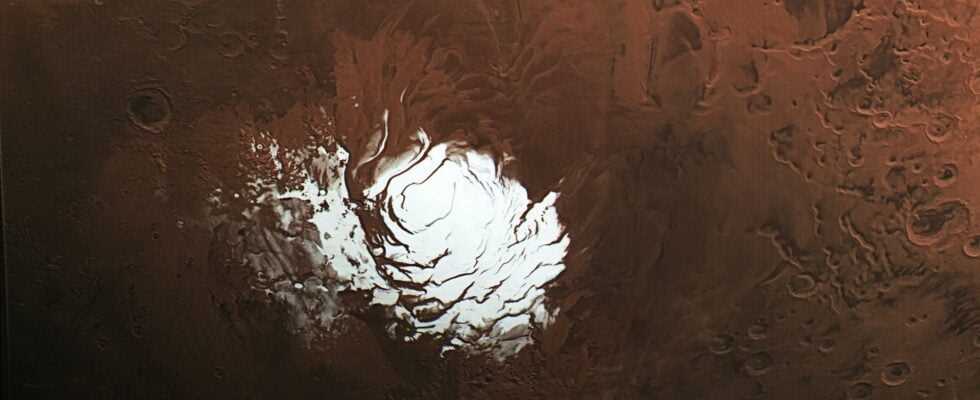There is plenty of water on the red planet: For example, there is an ice sheet several kilometers thick at both poles, which consists mainly of water. However, references to water in a liquid state have repeatedly turned out to be the wrong track. A “Science” study from 2018 now threatens to do the same. A research group now says that the supposed lake at the south pole of Mars, which experts wanted to have recognized in radar data at the time, could just as easily be an area with volcanic rock or the loamy deposits of an ancient river bed. The critical reanalysis of the radar data comes from a team led by Cyril Grima from the University of Texas at Austin. It is published in the »Geophysical Research Letters«.
According to the original study, the lake with the liquid water should be around one and a half kilometers deep not far from the actual polar cap, more precisely in the ice-rich layer deposits located there. These deposits were measured by the Mars Advanced Radar for Subsurface and Ionospheric Sounding (MARSIS) on board ESA’s Mars Express spacecraft. In its data, Roberto Orisei and his colleagues from the Istituto Nazionale di Astrofisica in Bologna encountered a surprisingly strong signal that they interpreted as reflections from an underground lake.
© Cyril Grima
Mars under a kilometer of simulated ice | If all of Mars were covered in ice, all of the spots marked in red would produce a radar echo similar to the one at the Martian south pole in question – although there is no water there but (as far as is known) plains filled with volcanic rock.
Cyril Grima’s team now looked at the radar readings from other regions of Mars not covered by ice and simulated how the signal from those regions would change if it had passed through a kilometer and a half of ice. It turned out that smooth layers of rock of volcanic origin under simulated ice look just like the putative lake under the real ice. Such plains of volcanic rock abound on Mars. For other researchers, the signal from the south pole of Mars fits better with sediments that form in river beds. That would be an indication of the early days of Mars, when liquid water probably still existed there.
